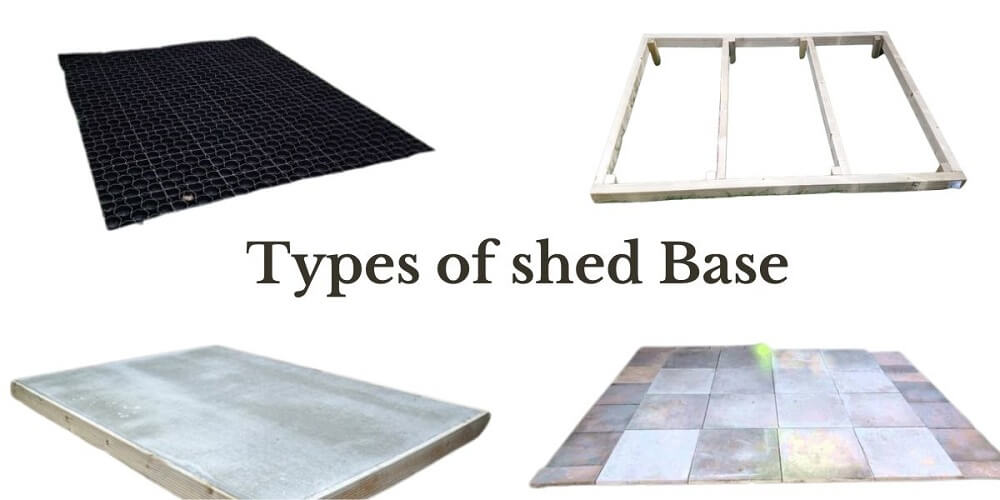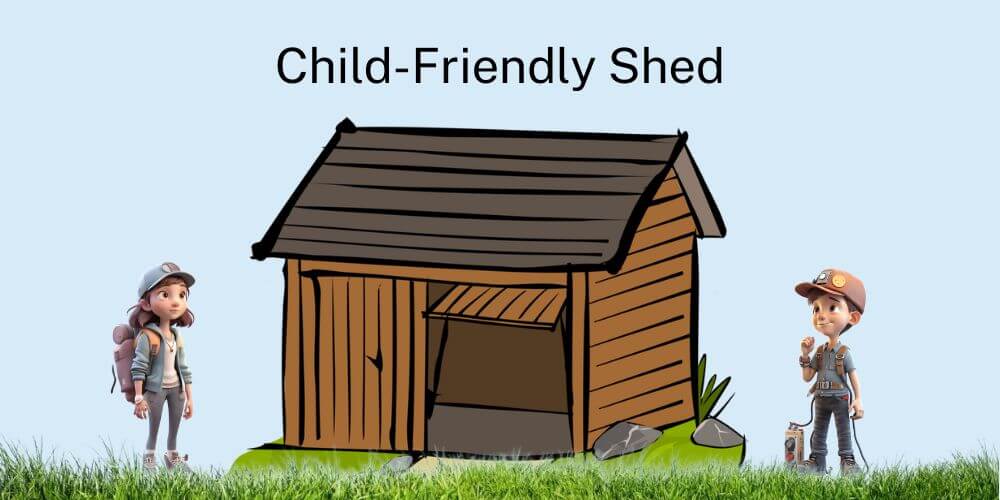The type of shed base you choose will affect the stability and durability of your shed, as well as its overall appearance. There are several different types of shed base to choose from, each with its own advantages and disadvantages.
Types of Shed Base
Here are the four most common types of shed base:
Concrete Base
Concrete bases are one of the most popular types of shed base. It provides a solid and level surface that can support heavy loads. To create a concrete base, a hole is dug and filled with a layer of hardcore, followed by a layer of sand and a layer of concrete. The concrete can be left plain or covered with a layer of paving slabs or tiles.
When installing a concrete base, it is important to ensure that it is level and has a slight slope to allow for water drainage. A concrete base should also be at least 100mm thick and reinforced with steel mesh or bars for added strength.
Before installing a shed, it is important to make sure that the base is strong and level.
Paving Slab Base
A paving slab base is a cost-effective and easy-to-install option. It involves laying a grid of paving slabs on top of a layer of sand or gravel. The slabs should be levelled and secured with mortar or adhesive. This type of base is suitable for small to medium-sized sheds.
When installing a paving slab base, it is important to ensure that the ground is level and compacted. The slabs should be laid on a bed of mortar or sand and should be levelled using a spirit level. The edges of the slabs should also be sealed with silicone to prevent water from seeping underneath.
Plastic Grid Base
Plastic bases are one of the most cheapest types of shed base. A plastic grid base is a lightweight and eco-friendly option. It consists of interlocking plastic grids that can be filled with gravel, sand, or soil. The grids provide a stable and permeable surface that allows water to drain away. This type of base is ideal for uneven or sloping ground.
Timber Bearers Base
A timber bearers base is a simple and affordable option. It involves laying pressure-treated timber beams on top of a layer of gravel or concrete blocks. The beams are leveled and spaced apart to support the shed. This type of base is suitable for small to medium-sized sheds and can be easily dismantled if needed.
When constructing a timber base, it is important to use pressure-treated timber and to ensure that the ground is level and compacted. The timber should be laid in a grid pattern and fixed together using screws or nails. A layer of gravel or hardcore can also be added underneath the timber to aid with drainage.
Factors to Consider
We consider the next factors as the main ones when looking to decide among the types of shed bases.
Cost
When choosing a shed base, cost is an important factor to consider. Some bases, such as concrete, can be expensive to install, while others, such as plastic grids, can be more affordable. It’s important to balance cost with durability and suitability for your specific needs.
Durability
The durability of a shed base is crucial, as it will affect the lifespan of your shed. Concrete is a very durable option, but it can crack over time. Plastic grids are less durable but can last for many years if properly installed and maintained. Consider the weather conditions in your area and the weight of your shed when choosing a base.
Leveling
One of the most important factors to consider when choosing a shed base is leveling. A level base will ensure that your shed is stable and secure. Concrete and paving slabs are both good options for achieving a level base, but they can be more difficult to install than other options. Plastic grids can be easier to level but may require additional preparation work.
Drainage
Proper drainage is essential for preventing water damage to your shed. Concrete and paving slabs can be prone to water pooling, so it’s important to ensure that they are properly sloped to allow for drainage. Plastic grids are designed to allow water to drain through them, making them a good option for areas with high rainfall.
Final Thoughts
The right type of shed base will not only ensure that the shed is stable and secure, but will also help to protect it from moisture and other types of damage. However, the right type of shed base it will ultimately depend on your specific needs and preferences.
Click here to read about the best type of shed base.



